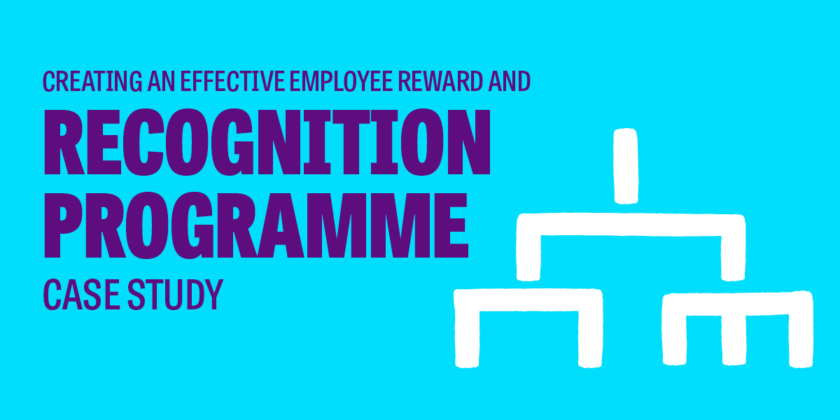Using employee recognition to make staff feel valued and generate high-performance
While the effectiveness of performance reviews and yearly appraisals has been debated for a while, we at Let’s Talk Talent believe these are great ways to increase motivation and generate high performance. However, linking your performance review programme to pay and reward can sometimes add some complexity into the mix. A higher level of planning is required, as an inefficient initiative may leave staff feeling confused on how to best contribute to the organisation, or worse, undervalued.
“Creating a great incentive plan can be tricky, but it can also turn into a kickass motivational tool for your people,” says Jo Taylor, MD at Let’s Talk Talent.
What’s the right framework to follow when setting up a pay and reward programme? How can you make sure you hit the mark with an employees’ pay and reward package that delivers results? That’s the question one of our telecom clients asked us to answer. Here’s how we did it.
What makes a good performance management process?
It’s true that financial rewards often lead to increased motivation. However, research shows that this result tends to be short-term. Motivation has to come from within, and extrinsic motivators such as money or perks are not enough on their own. So, what works?
Performance management is made up of three components: people, processes and managers (download our performance management whitepaper here for more details). Whilst it can be difficult to achieve a perfect split, many organisations put most of their focus on processes. At LTT, we think everyone should start with people.
1. Putting employees first
An effective performance management approach prioritises the employees and makes them feel valued and appreciated for their contribution. It should unlock someone’s full potential by helping them to set stretching goals, and to achieve them with resources, feedback and good career conversations. This may sound obvious, but performance management is a delicate balancing act between employee and organisational performance, and this can sometimes feel like walking a tightrope.
2. Trusting managers to increase performance
The very purpose of your incentive programme is to generate high-performance. This requires alignment between your people and your strategic priorities. It also means that your managers are responsible for creating a culture of performance, hence they should be given the autonomy and freedom to set the right objectives for their teams. They are also responsible for creating a culture of feedback, which should be based on honesty and transparency.
3. Attracting the right people
Your programme will play a key role in attracting talented recruits to your business. Organisations that set up a strong link between pay and performance will put themselves ahead of the competition as high achievers will see a clear financial benefit in working for them, making it much easier to attract the right skill set.
4. Designing a fair system
Transparency is a key success criteria for any pay and reward programme. Both managers and employees should understand what they need to do in order to be recognised. To achieve this, you’ll need to communicate your programme well, and ensure it is understood by managers and their team members. You should also review it on a regular basis and ensure you communicate any changes to your talent pool.
5. Creating the join up
Implementing a pay and reward system without supporting it with the right leaning and development resources, career management opportunities or manager training is bound to have limited results. Make sure you make this element a key part of every single pillar of your HR strategy.
How do you know your performance management process needs a review?
Here are a few signs that your pay and reward programme could do with a few improvements:
- People have to wait until the end of the year to get feedback.
- Performance ratings do not lead to a clear development plan and there are no tools for lower performers to improve their performance.
- There are no ways to pick high performers from the crowd.
- People are unclear on what they need to do to get rewarded.
- Managers do not give effective developmental feedback.
- Performance management is seen as a box-ticking exercise rather than a motivational tool.
- The programme does not reward the highest performers (for example, everyone receives the same bonus).
If you’d like to improve your performance management process, have a read of this article on the top performance management mistakes you may be making and how to correct them.
Designing an effective pay-for-performance system: a practical approach
When our telecoms client reached out to us to improve the performance of their reward system, we began with an internal audit. We conducted a series of focus groups to gain a thorough understanding of how people felt about the process.
The next step was to review their current performance management cycle based on our findings. We got rid of the annual model and moved to a cycle which focused on more regular feedback. The objectives-setting framework and the bonus calculation were improved to provide a clearer structure that rewarded high performers and generated motivation.
Now that we had a new process, we needed to ensure it would be successful in its implementation. For this, managers had to be on board. We created and rolled out manager training tools to improve feedback delivery and objective setting, and equipped them with everything they needed to have better career conversations.
The last step in our approach was to communicate the plan so that everyone was clear on what they had to do to be rewarded. Internal channels were used to show people the art of the possible, and to show them what good looks like within the organisation.
Pay and reward as part of your HR strategy
In order for it to work, a pay and reward programme shouldn’t be all about money. Financial gain, whilst a great incentive for staff, leads to short-term improvements. Your performance review process should mostly be supported by internal motivation factors, such as career progression, recognition or learning and development. Therefore, it is crucial to create an effective join up between every single one of the pillars within your HR strategy.
The icing on the cake?
“Test and review your programme regularly to ensure it is still relevant and generating high performance,” adds Jo. “Check in with staff often rather than wait until the big year-end appraisal, ask for feedback and try new things often,” she adds.
If you’d like some help designing a pay and reward performance management programme, don’t hesitate to book a call with us. Alternatively, have a look at the performance management service page on our website for some free resources, including our downloadable performance management whitepaper.

